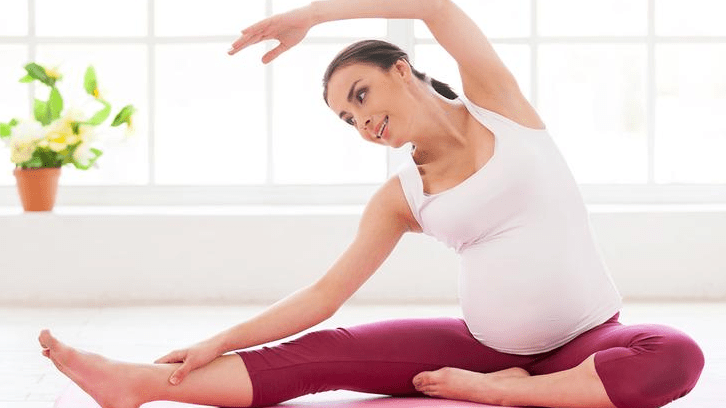Pregnancy Yoga: An essential Guide for Expecting Mothers
You’re expecting?! Congratulations! You must be – excited, scared, happy, and overwhelmed – all at the same time. It’s difficult to put your finger on just what you’re feeling, isn’t it? The kicks are delightful, but the cramps are debilitating. You might be glowing with enthusiasm one moment and overcome with emotion the next. Nothing quite explains the feeling of having a life growing inside you. You may also experience a fair share of mood swings; courtesy of hormonal changes. This is precisely why yoga can be a godsend for you during pregnancy.
How Yoga for Pregnant Women Helps
- Yoga provides holistic health benefits for soon to-be-mothers:
- Yoga during pregnancy helps keep the body supple. They relieve tension around the cervix by opening up the pelvic region. This prepares to-be mothers for labor and delivery.
- Yoga and pranayamas can train you to breathe deeply and relax consciously, helping you face the demands of labor and childbirth.
- Pregnancy Yoga helps alleviate the effect of common symptoms such as morning sickness, painful leg cramps, swollen ankles, and constipation.
Yoga asanas also help pregnant women recover faster post-delivery Pregnancy is a beautiful journey that brings numerous physical and emotional changes for women. As an expecting mother, it’s important to prioritize your health and well-being during this crucial time. One highly recommended activity is practicing yoga, which not only helps you stay physically fit but also provides mental and emotional benefits. In this comprehensive guide, we will delve into the world of pregnancy yoga and explore its various aspects, benefits, and safety precautions.
Understanding Pregnancy Yoga:
Pregnancy yoga, also known as prenatal yoga, is a specialized form of yoga tailored to the needs and limitations of expectant mothers. It involves gentle stretching, breathing exercises, and relaxation techniques that promote physical strength, flexibility, and emotional balance. Pregnancy yoga classes are typically designed to address the specific physical changes and challenges that occur during each trimester.
Physical Benefits:
Regular practice of pregnancy yoga offers numerous physical benefits. It helps alleviate common discomforts such as back pain, fatigue, and swollen ankles. The gentle stretches and poses improve blood circulation, reduce muscle tension, and promote overall strength and flexibility. Additionally, it can enhance posture and help prepare the body for childbirth.
Emotional and Mental Benefits:
Pregnancy can be an emotional rollercoaster, and yoga provides a safe space for expectant mothers to connect with their bodies and emotions. The breathing techniques and meditation practiced in pregnancy yoga help reduce stress, anxiety, and mood swings. It promotes relaxation, inner peace, and a sense of well-being, which can be incredibly beneficial during pregnancy.
Choosing the Right Pregnancy Yoga Class:
When considering pregnancy yoga, it is essential to find a qualified and experienced instructor who specializes in prenatal yoga. Look for classes that focus on gentle movements, modifications for different stages of pregnancy, and proper breathing techniques. Joining a supportive community of expectant mothers can also provide a nurturing environment for sharing experiences and building friendships.
Safe and Recommended Yoga Poses for Pregnancy:
During pregnancy, certain yoga poses are not suitable or safe. However, many poses can be adapted or modified to accommodate the changing body. Some recommended poses for pregnant women include:
- Cat-Cow Stretch: This gentle spinal movement helps relieve back pain and promotes flexibility.
- Butterfly Pose: Sitting with the soles of your feet together and gently pressing the knees down can help open the hips and relieve tension.
- Prenatal Sun Salutations: Modified versions of the traditional sun salutation sequence help improve circulation, stretch the entire body, and build strength.
- Supported Squat: This pose helps open the pelvis, prepare for childbirth, and strengthen the legs.
It is crucial to listen to your body and only practice poses that feel comfortable. If any pose causes discomfort or pain, it is best to avoid it and consult with your instructor or healthcare provider.
Safety Precautions and Considerations:
- While pregnancy yoga is generally safe, it is essential to take necessary precautions to ensure the well-being of both you and your baby:
- Consult Your Healthcare Provider: Before starting any exercise regimen during pregnancy, it is crucial to seek guidance from your healthcare provider. They can assess your individual situation and provide specific recommendations.
- Avoid Overexertion: Pregnancy is not the time to push your limits. Listen to your body and take breaks when needed. Avoid overheating and stay hydrated during your practice.
- Modify Poses as Needed: As your pregnancy progresses, you may need to modify or avoid certain poses that put pressure on your abdomen or strain your muscles. Always prioritize comfort and safety.
- Avoid Deep Twists and Inversions: Deep twists and inversions should be avoided during pregnancy as they may affect the blood flow to the uterus and potentially harm the baby.
Pregnancy yoga offers expectant mothers a multitude of benefits, both physically and emotionally. It provides a safe and effective way to stay active, relieve discomfort, reduce stress, and connect with the changes happening within your body. By choosing the right class, practicing recommended poses, and following safety precautions, you can enjoy a fulfilling and nourishing experience. Embrace this transformative time and embark on a journey of self-care and well-being through pregnancy yoga.











